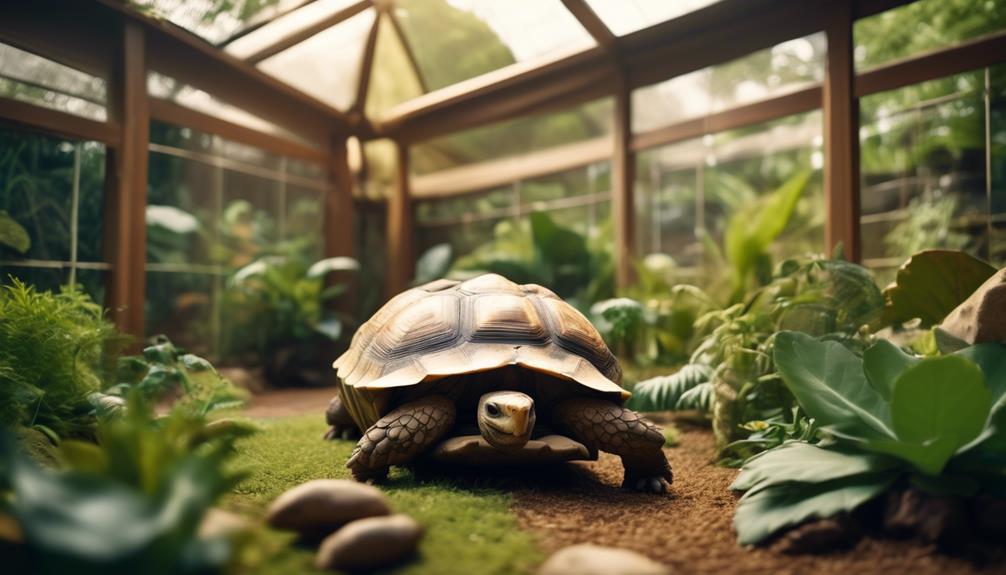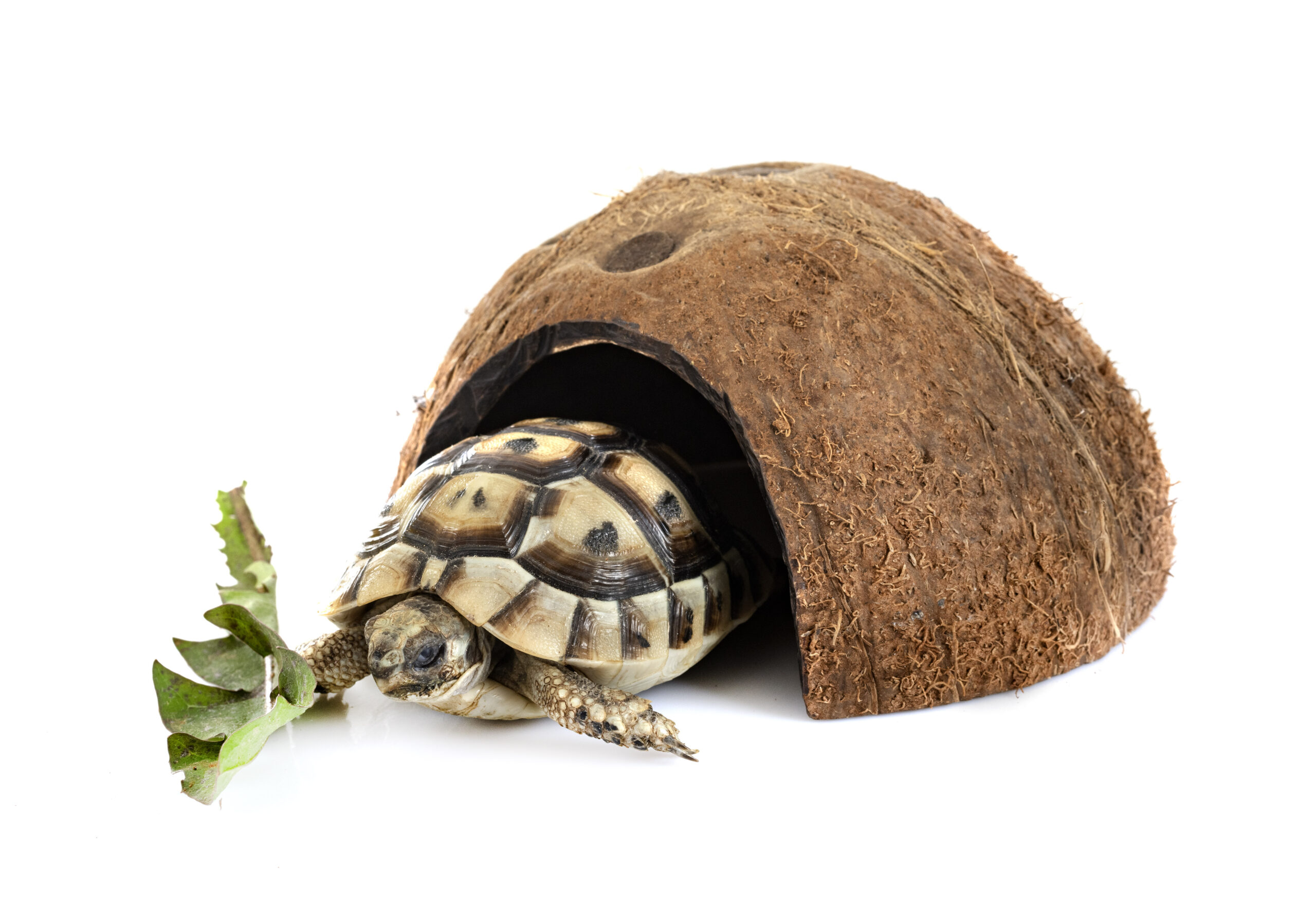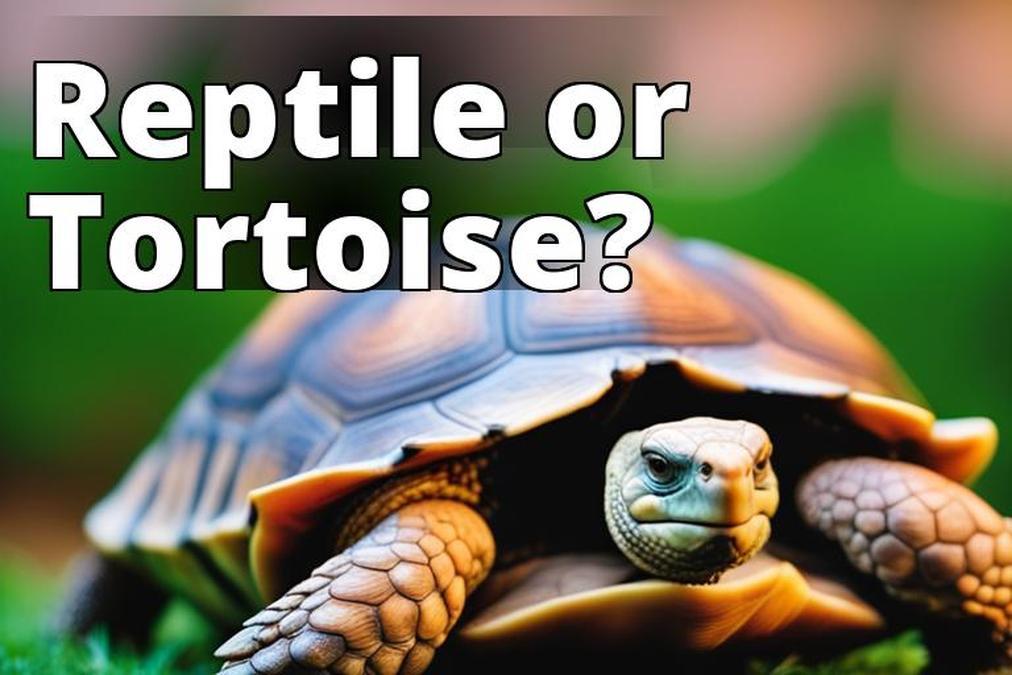Welcome to our comprehensive guide on tortoise care! One of the distressing situations that tortoise owners may encounter is finding their beloved pet upside down. It is crucial to understand the potential dangers and proper handling techniques in such situations to ensure the well-being of your tortoise. In this section, we will provide an overview of tortoise care regarding upside-down situations and highlight the importance of proactive measures.
Key Takeaways:
- Understanding the risks associated with upside-down tortoises is essential for responsible pet ownership.
- Proactive measures can help prevent upside-down situations and promote your tortoise’s safety.
- Prompt and proper care is crucial if you find your tortoise upside down.
- Knowing how to safely right a tortoise and recognizing potential injuries post-flip is vital.
- If necessary, seek veterinary care for further evaluation and treatment.
Understanding the Phenomenon of an Upside-Down Tortoise
An upside-down tortoise is a common occurrence that can cause distress to both the tortoise and its owner. To effectively handle these situations, it is essential to understand the underlying causes and the tortoise’s self-correcting abilities. Additionally, the unique features of a tortoise’s shell play a significant role in their mobility and ability to right themselves when upside down.
Common Causes of Tortoise Turnovers
Tortoise turnovers can happen due to various reasons. Some common causes include:
- Climbing mishaps: Tortoises may attempt to climb obstacles that are too steep or slippery, leading to accidental turnovers.
- Interactions with other tortoises: Dominance behaviors or aggressive interactions with other tortoises can result in turnovers.
- Illness or injury: Weakness or physical impairments can cause tortoises to lose their balance and end up upside down.
- Unusual habits: Certain tortoise species have unique behaviors, such as diggers that can accidentally flip themselves while burrowing.
Anatomy and the Tortoise’s Ability to Self-Correct
The anatomy of a tortoise plays a vital role in its ability to self-correct when upside down. Tortoises have a low center of gravity and a sturdy shell that allows them to exert force and leverage their weight to flip over. Additionally, their strong legs and claws enable them to push against the ground and regain an upright position.
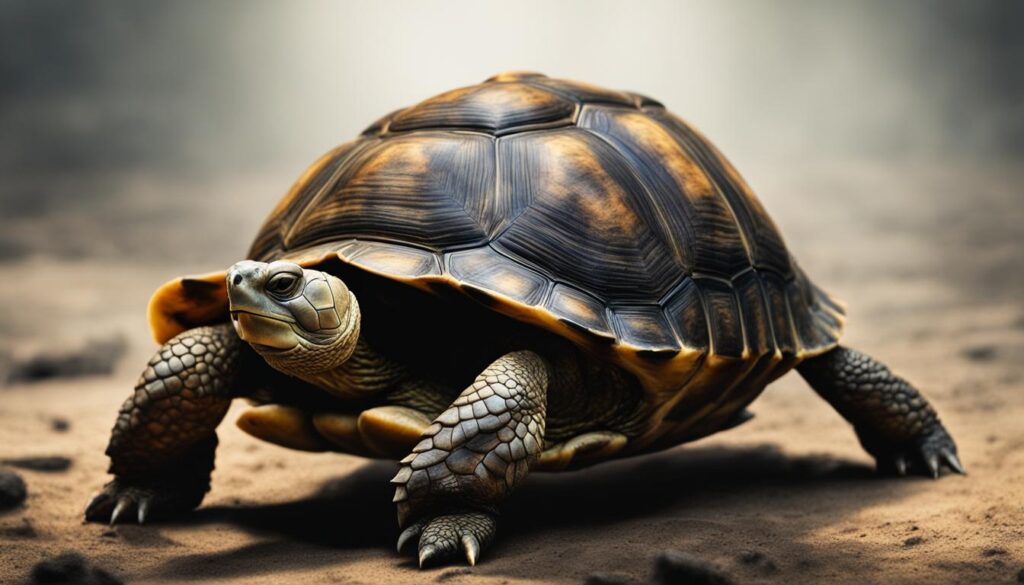
It is important to note that while tortoises have a remarkable ability to withstand being upside down, there is a time limit before serious health consequences can occur. Without intervention, an extended duration of being upside down can lead to organ failure, dehydration, and even death.
As a responsible tortoise owner, it is crucial to monitor your pet closely and take appropriate action if you find them in an upside-down position. If your tortoise remains upside down for an extended period, it is advisable to gently assist them in returning to their normal position or seek veterinary assistance if necessary.
| Factors Influencing Tortoise Duration Being Upside Down | Duration Limit |
|---|---|
| Temperature | Varies depending on the species and environmental conditions |
| Hydration | Several hours to a day |
| Tortoise’s Overall Health | Varies depending on the individual’s fitness level and underlying health conditions |
The Dangers of Tortoises Upside Down: From Dehydration to Predation
Tortoises being upside down can expose them to various risks that can have detrimental effects on their health and well-being. Understanding these dangers is crucial for tortoise owners to provide the necessary care and prevent potential complications.
Physical Stresses and Organ Compression
When a tortoise is upside down, their body experiences physical stresses and organ compression, which can lead to severe health issues. The weight of the tortoise’s internal organs pressing against their chest cavity can interfere with their breathing and circulation, causing respiratory problems and cardiovascular strain.
Dehydration and Heat Exposure
Being upside down for a prolonged period can also result in dehydration and heat exposure. Tortoises need access to water to maintain proper hydration levels. Inverted, they are unable to reach their water source, increasing the risk of dehydration. Additionally, the heat exposure from the sun can further exacerbate the dehydration, leading to serious health complications.
Potential for Injury and Parasitic Attacks
Upside-down tortoises are vulnerable to injuries and parasitic attacks. When unable to move, they may be susceptible to predators and accidental injuries, such as cuts and bruises. Furthermore, being in contact with the ground for an extended period increases the risk of parasitic infestations, which can weaken the tortoise’s immune system and compromise their overall health.
Preventive Strategies to Keep Your Tortoise on Its Feet
Preventing upside-down situations is essential for the well-being of your tortoise. By implementing the following preventive strategies, you can minimize the risk and ensure your pet stays safe and upright:
- Create a suitable habitat: Provide a spacious and secure enclosure that meets the specific needs of your tortoise. Consider factors such as temperature, humidity, and lighting to create a comfortable environment.
- Remove potential hazards: Regularly inspect the tortoise’s habitat for any objects or substances that could pose a danger. These may include sharp objects, toxic plants, or potential escape routes.
- Provide appropriate climbing structures: Tortoises enjoy exploring and climbing. Offer sturdy and safe structures, such as rocks and branches, that allow them to exercise and satisfy their natural instincts without the risk of falling and ending up upside down.
By following these preventive measures and ensuring a suitable environment for your tortoise, you can help maintain its upright position and overall well-being.
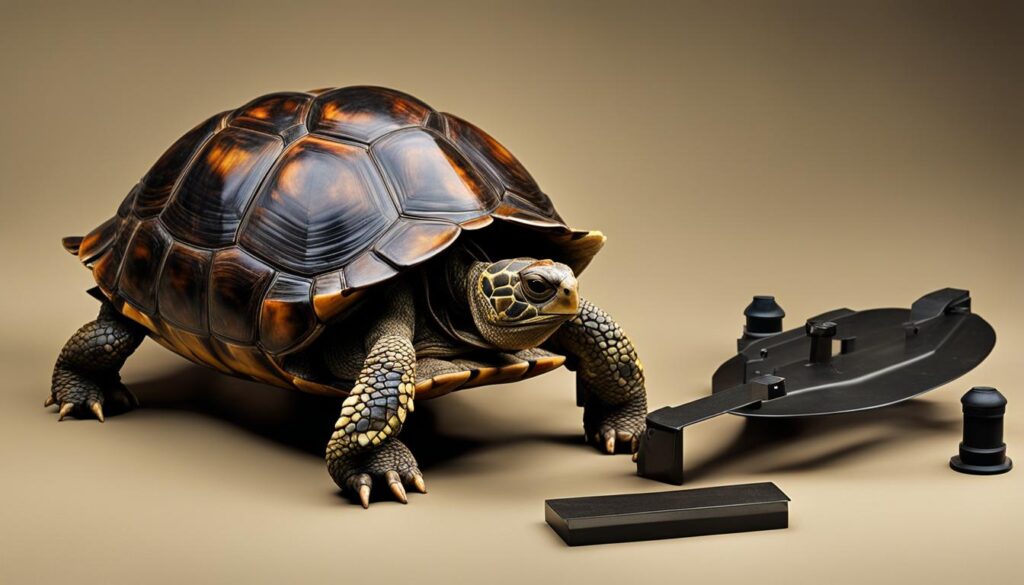
Responding to an Upside-Down Emergency: Proper Care Techniques
In the event that a tortoise is found upside down, it is crucial to provide prompt and proper care to ensure its well-being. This section will guide you through step-by-step instructions on how to safely right a tortoise without causing unnecessary stress or injuries. It will also provide insights into recognizing potential injuries that may occur after righting a tortoise and when it is necessary to seek veterinary care for further evaluation and treatment.
Righting a Tortoise: A Step-by-Step Guide
When you come across an upside-down tortoise, follow these steps to safely right it:
- Assess the situation: Before taking any action, evaluate the tortoise’s condition. Ensure that the tortoise is not injured and appears to be responsive.
- Prepare a suitable surface: Find a soft and level surface nearby, such as grass or a towel, to place the tortoise after righting it.
- Approach the tortoise: Gently approach the tortoise from behind to avoid startling it.
- Place your hands on the shell: Position your hands firmly on both sides of the tortoise’s shell, near the front and rear legs.
- Lift and roll: Lift the tortoise slowly, making sure to support its weight evenly. Roll it onto its belly in a smooth motion.
- Observe the tortoise: Once the tortoise is righted, give it a moment to adjust and ensure it can move freely.
- Transfer to a safe area: Gently place the tortoise on the prepared surface, where it can rest and recover.
Recognizing and Treating Potential Injuries Post-Flip
After righting a tortoise, it is important to carefully observe for any signs of injuries that may have occurred during the upside-down situation. Common injuries to look out for include:
- Fractures or cracks: Examine the shell for any visible damage or abnormalities.
- Soft tissue injuries: Check for any wounds, cuts, or swelling on the tortoise’s legs, head, or neck.
- Abnormal behavior: Monitor the tortoise’s movements and behaviors. Any changes in mobility or unusual behavior could indicate an underlying injury.
- Difficulty breathing: Pay attention to the tortoise’s respiratory rate and any signs of labored breathing.
If you notice any of these signs or suspect that your tortoise may be injured, it is crucial to seek veterinary care immediately for proper evaluation and treatment.
When to Seek Veterinary Care
While minor flips may not always result in significant injuries, there are instances when veterinary care is necessary. You should consider seeking veterinary care if:
- The tortoise shows signs of severe distress or is unresponsive after being righted.
- There are visible injuries such as open wounds, fractures, or extensive cracks in the shell.
- The tortoise exhibits abnormal behavior or difficulty breathing.
- You are uncertain about the tortoise’s condition and want to ensure its well-being.
Remember, immediate veterinary care can help identify and treat any underlying injuries, ensuring the best possible outcome for your tortoise’s health and recovery.
Conclusion
In conclusion, it is essential for tortoise owners to understand the dangers and risks associated with upside-down situations. This article has provided comprehensive information on tortoise care, including handling techniques, preventive measures, and proper care strategies.
By implementing the recommended preventive strategies, such as creating a suitable habitat and removing potential hazards, tortoise owners can significantly reduce the likelihood of their pets ending up upside down. This proactive approach to tortoise care helps safeguard their well-being and ensures a healthier overall quality of life.
Remember, timely response and proper care are crucial in upside-down emergencies. By following the step-by-step guide provided in this article, tortoise owners can safely right their pets while minimizing stress and potential injuries. However, it is important to recognize potential injuries post-flip and seek veterinary care when necessary for proper evaluation and treatment.
To be responsible tortoise owners, it is our duty to continuously educate ourselves about the unique needs and potential risks associated with our pets. By staying informed and implementing preventive measures, we can provide the best possible care for our tortoises, ensuring their safety, well-being, and happiness throughout their lives.
FAQ
What are the common causes of tortoise turnovers?
Common causes of tortoise turnovers include climbing mishaps, interactions with other tortoises, illness or injury, and unusual habits.
How does the anatomy of a tortoise impact its ability to self-correct when upside down?
The shape of a tortoise’s shell can affect its ability to self-correct when upside down. Some tortoises may struggle to roll back onto their feet due to their specific physical attributes.
How long can a tortoise safely remain upside down?
The duration a tortoise can safely remain upside down depends on factors such as temperature, hydration, and the tortoise’s overall health. It is essential to take prompt action if a tortoise is found in an upside-down position.
What are the dangers of a tortoise being upside down?
When a tortoise is upside down, it experiences physical stresses and organ compression, risks dehydration and heat exposure, and is vulnerable to injuries and parasitic attacks.
What preventive strategies can I implement to keep my tortoise upright?
You can create a suitable habitat, remove potential hazards, and provide appropriate climbing structures to minimize the occurrence of upside-down situations for your tortoise.
How do I safely right a tortoise that is upside down?
To safely right a tortoise, follow a step-by-step guide that ensures minimal stress and risk of injury. It is important to recognize and treat any potential injuries post-flip and seek veterinary care if necessary.





